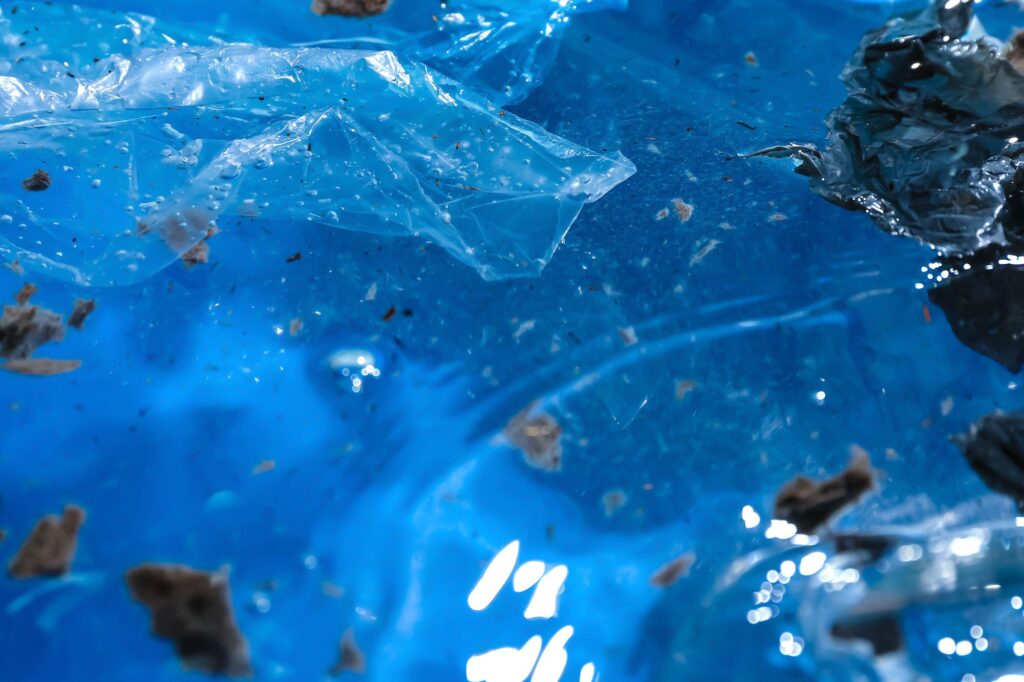
When the first full synthetic plastic was invented in 1906 – over 100 years ago – widespread use of the material for consumer products soon arose in the post-war period. Plastic was cheaper to produce than the more expensive paper, glass and metal materials used in throwaway items – such as consumer packaging – and was also stronger, lighter, safer and more durable, and it shifted the way that we use materials forever.
However, the properties of plastic that make it such an attractive material, such as durability and strength, also make it a lasting problem once it reaches the end of its useful life. Some types of plastic can take thousands of years to degrade, and it is estimated that a truckload of plastic enters the ocean every minute.
In response to such concerns, biodegradable plastics – that is, plastics that can break down or ‘biodegrade’ – have been in development since the end of the last century, to achieve similar usage and convenience of traditional plastics, but with the goal of breaking down quickly and harmlessly.
But, as the global production of biodegradable plastics increases – from 1.5 million metric tons in 2023 to almost 5.3 million in 2028 – it is critical that we understand the impacts of these materials on the environment.
As such, a 12-week study has been underway in the laboratory in our Mesocosm, a facility that enables scientists to conduct research in a controlled aquatic environment – which closely simulates natural conditions.
The experiment aims to understand the impact of biodegradable plastic on marine coastal ecosystem processes, and to determine what exactly happens to the plastic once it enters the marine system. It is a collaboration between Plymouth Marine Laboratory, the University of Plymouth, and the University of Bath, and funded with thanks to a NERC Highlight Topic grant.
Dr Rachel Coppock, who has been overseeing the experiment in the Mesocosm, said:
“Our understanding about the impacts of biodegradable plastics is really in its infancy. Whilst biodegradable plastics pose the potential to reduce the longevity of plastic pollution in the environment, any additives in the plastic may leach out during degradation – and we don’t fully understand what impact that may have on fauna or ecosystems.”
“Many biodegradable plastics are not designed to break down in the natural environment, but rather under specific conditions, like industrial composters. So, when these types of biodegradable plastics end up in the sea, they may take a long time to degrade. In fact, one study by colleagues at University of Plymouth found that a biodegradable carrier bag could still hold a full bag of shopping after being submerged in the sea for 3 years.”
“Our experiment in the Mesocosm began by collecting seawater, sediment and animals from the Plymouth Sound on our research vessel the Quest. We then divided these into separate tanks, which have controlled conditions to closely resemble the real conditions in the water column. And then, we began exposing each tank to particles of either biodegradable plastics or traditional plastics.”
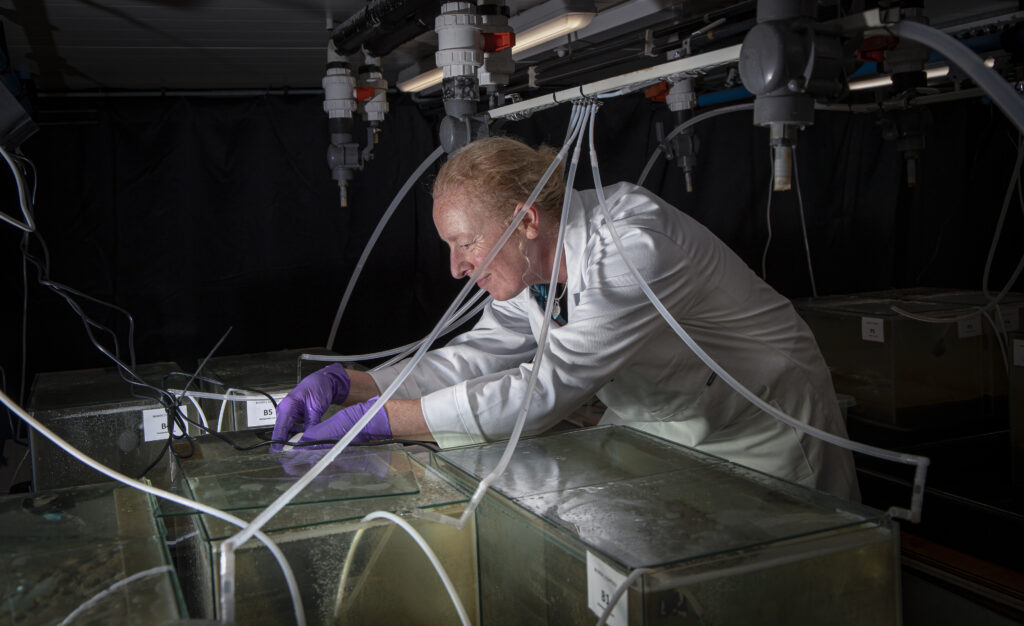
So, what will be experiment be measuring?
Dr. Coppock explains: “There are three key ecosystem processes that we will be evaluating. The first is the microbial community, which is hugely important in determining biodiversity and ecosystem health.”
[Aquatic microbial community can be defined as a mix of co-occurring, and potentially interacting, microbes, present in a defined habitat in space and time. Despite the small size, microorganisms are key elements for the ecological dynamics of the biosphere, contributing fundamentally to the biogeochemical processes on Earth.]
“Secondly, we will be evaluating the downward flux of carbon, from the water column to the ocean depths and seabed. This is known as the biological carbon pump – evaluated here by measuring sinking rates of zooplankton faeces after exposure to each plastic type.”
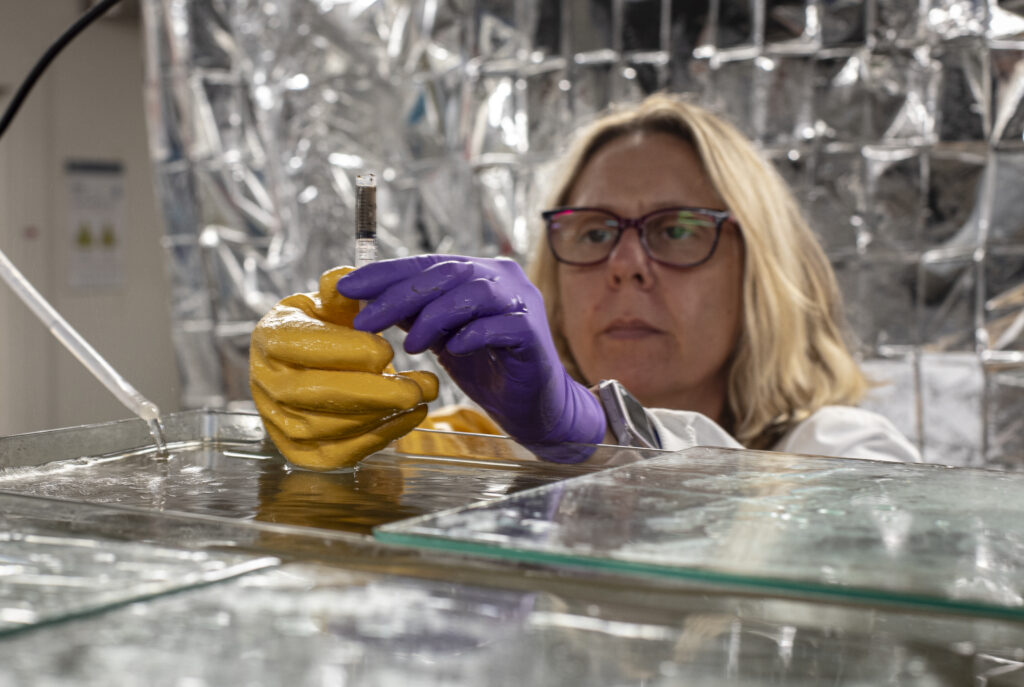
“And lastly, we’ll be evaluating bioturbation, or the mixing of sediment by burrowing animals, which is important for oxygenating sediments, nutrient cycling, sediment stability and carbon sequestration. All of these are critical ecological processes that contribute to the health and functioning of ocean ecosystems.”
“We will also be investigating the fate of the plastics. Once the plastics enter the marine system, where do they end up? To answer this, we will be analysing the animals, water and sediment with our colleagues from the University of Plymouth to work out where the plastic particles end up.”
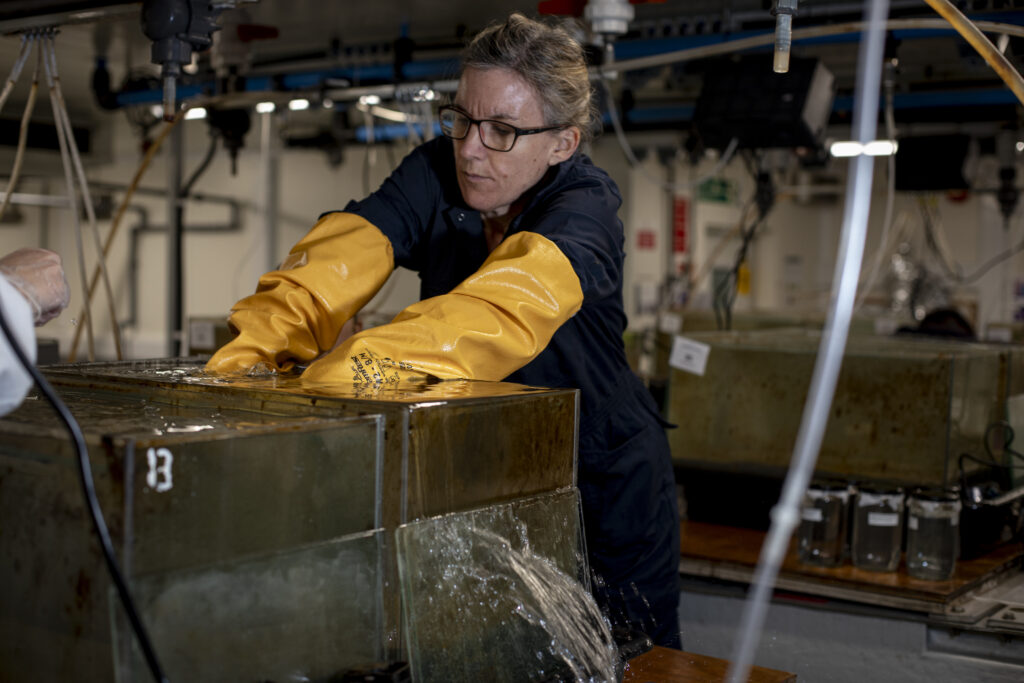
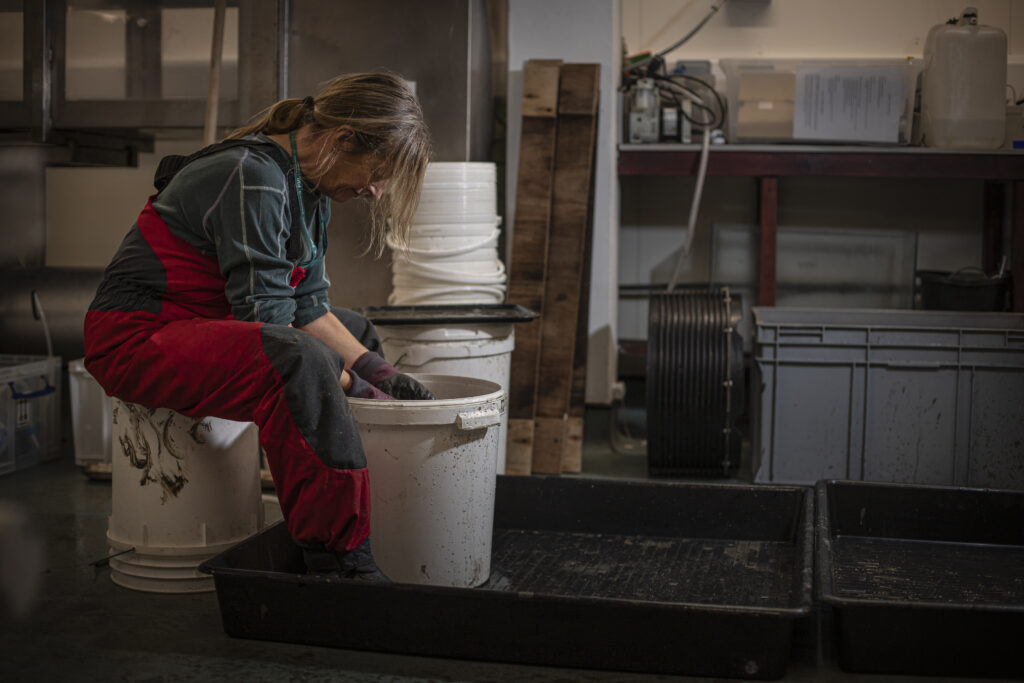
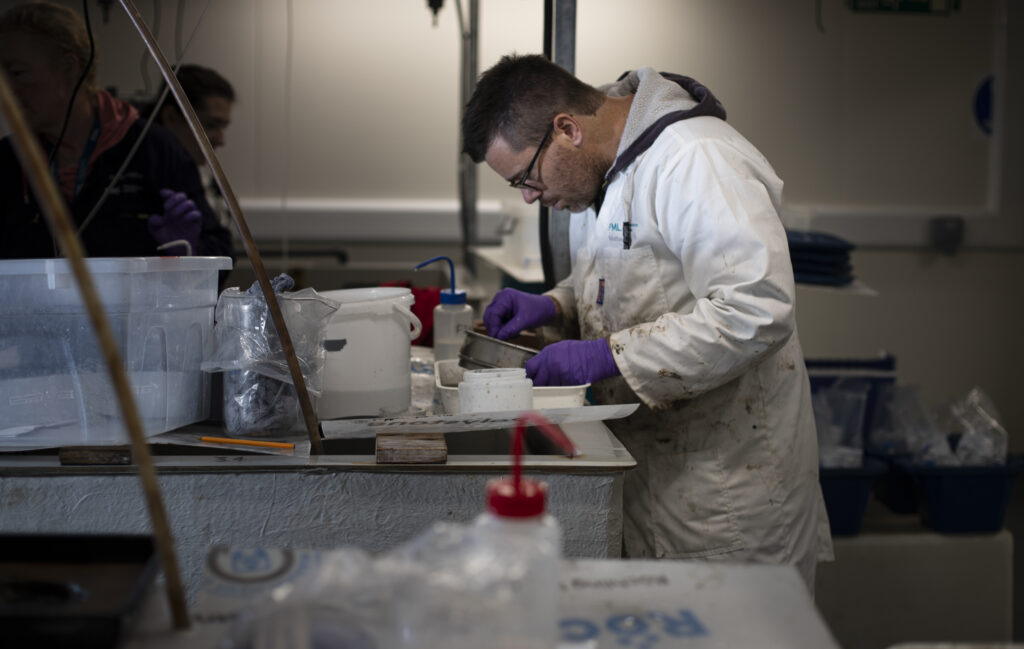
“The experiment concluded in December, and now we will be evaluating the findings. We hypothesize that both biodegradable and conventional plastic particles will be found in all compartments of the system, including buried in the sediment, within the animals, and in the water. We may see altered sinking rates of copepod faeces (biological carbon pump) and a shift in microbial community composition.”
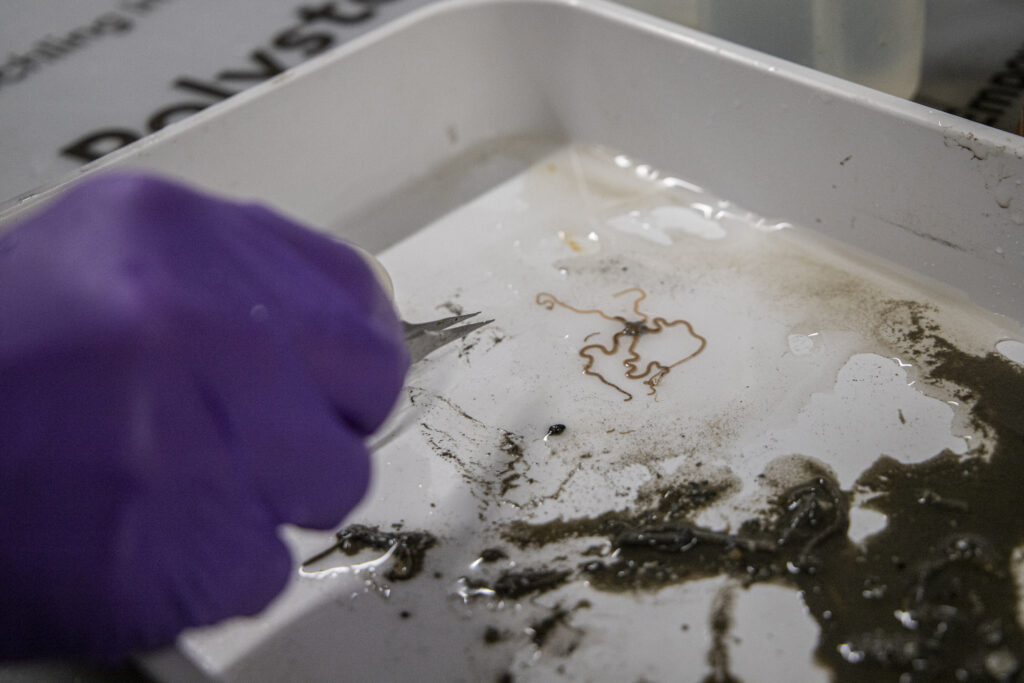
We will be sharing updates on this study at a later date, please stay tuned.
Related information
This experiment has taken place thanks to a NERC Highlight Topic grant, and is a collaboration between Plymouth Marine Laboratory, the University of Plymouth and the University of Bath.
Overall Principal Investigator is Richard Thompson at the University of Plymouth, and the Project lead at PML is Pennie Lindeque. Other key staff involved from PML are Rachel Coppock, Matt Cole and Karen Tait, with essential support from Christine Pascoe, Louise McNeill, Elaine Fileman Tom Mesher and Andrea McEvoy.
Source
Plymouth Marine Laboratory, press release, 2024-01-11.
Supplier
Plymouth Marine Laboratory
University of Bath
University of Plymouth
Share
Renewable Carbon News – Daily Newsletter
Subscribe to our daily email newsletter – the world's leading newsletter on renewable materials and chemicals









